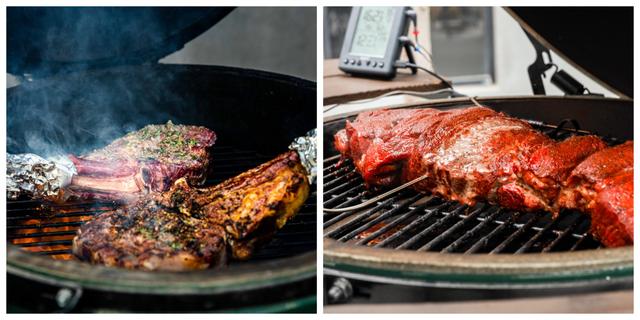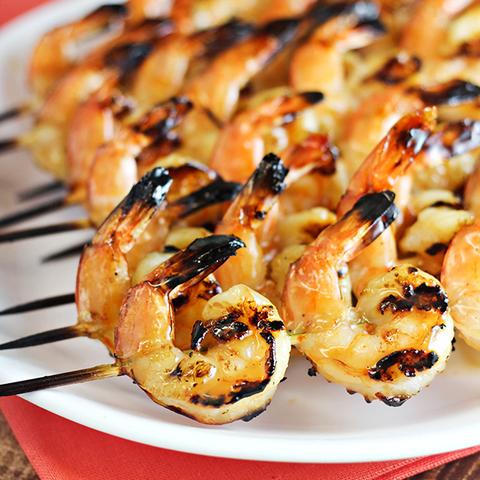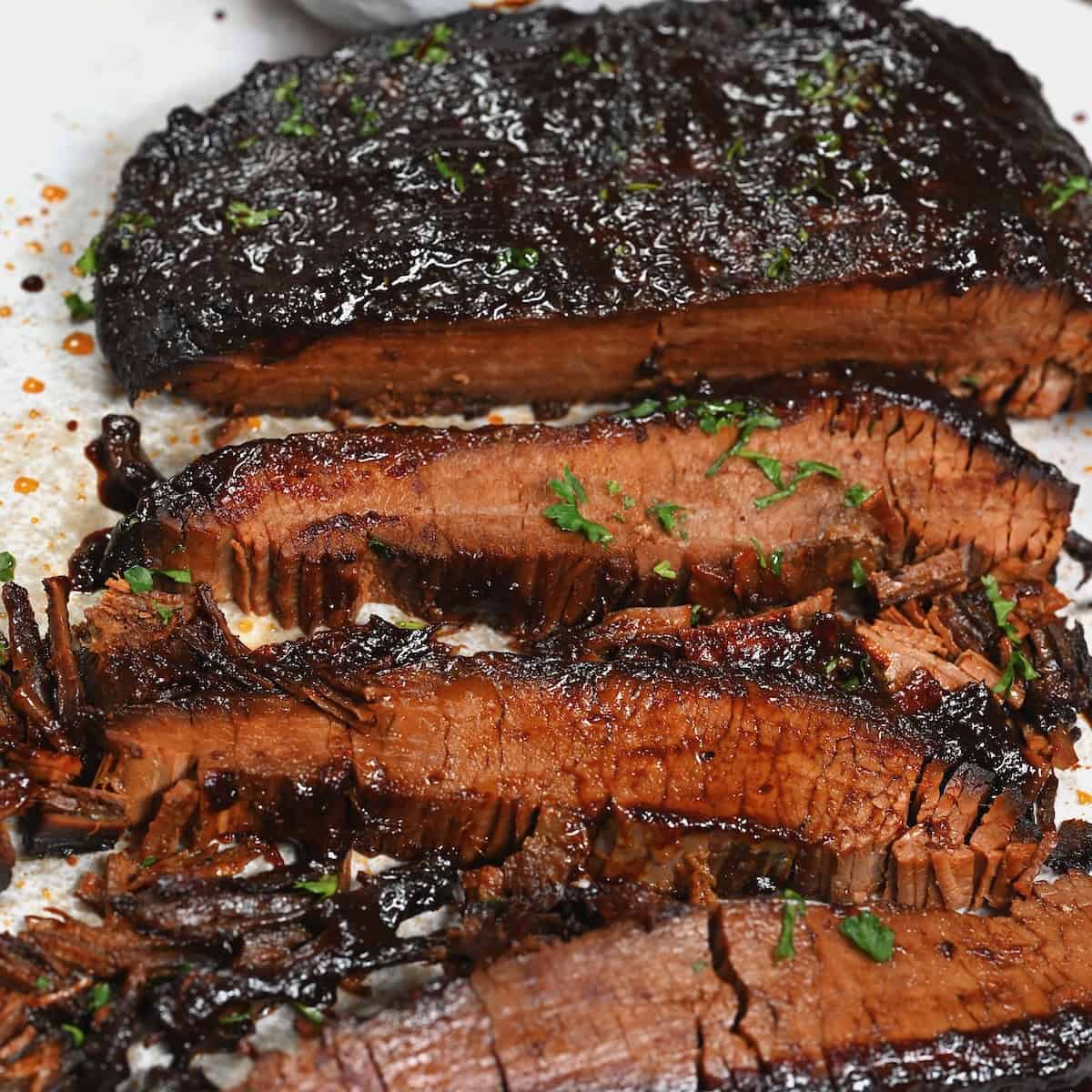
“Master the Art of Smoking Brisket: Unveiling the Perfect Temperatures – 180°F or 225°F. Delve into the secrets of achieving mouthwatering, tender brisket as we explore the optimal smoking temperatures. Discover which temperature suits your taste and learn expert tips to elevate your BBQ game to perfection. Join us on a flavorful journey today!”
THE SCIENCE BEHIND SLOW-COOKED SMOKED BRISKET
Slow-cooking smoked brisket involves a scientific process that results in tender and flavorful meat. The key is to cook the meat at a low temperature for an extended period of time, allowing the connective tissue to break down and become tender. This slow cooking process also allows the smoky flavor to penetrate the meat, creating a delicious taste.

The choice of temperature, whether 180 or 225 degrees Fahrenheit, affects how the smoke particles disburse and the overall flavor of the brisket. A lower temperature like 180 degrees allows for a longer cooking time, which is ideal for high-quality cuts of beef with consistent marbling. The intramuscular fat melts slowly, acting as a marinade and keeping the meat tender throughout the cooking process.
On the other hand, a higher temperature like 225 degrees Fahrenheit cooks the meat faster and produces a stronger smoky flavor. This is suitable for cuts with less marbling or inconsistent marbling, as it prevents the meat from drying out on the stove. Additionally, cooking at 225 degrees Fahrenheit creates a nice smoke ring and provides a crispy exterior without needing to build a bark.
WHAT TO LOOK FOR 180 VS 225
When deciding whether to cook your brisket at 180 or 225 degrees Fahrenheit, there are several factors to consider. First and foremost, think about your preference for smokiness. If you prefer a subtle smoky flavor, opt for cooking at 180 degrees. On the other hand, if you want a stronger smoky flavor, choose 225 degrees.
The quality and marbling of the meat also play a role in determining the ideal temperature. Briskets with higher marbling can be cooked at lower temperatures, as they will cook evenly and the connective tissue will break apart nicely. However, cuts with less marbling or inconsistent marbling are better suited for cooking at 225 degrees to prevent them from becoming dry and rubbery.
PREFERRED SMOKINESS IN MEAT
The level of smokiness desired in meat varies from person to person. Some prefer a subtle smokey flavor, while others enjoy a stronger and more pronounced smoke flavor. The choice between smoking at 180 or 225 degrees Fahrenheit depends on personal preference for smokiness. Cooking at 180 degrees results in a longer cooking time, allowing the connective tissue to melt off and creating a tender and juicy meat with a subtle smokiness. On the other hand, cooking at 225 degrees produces a stronger smoke flavor and is ideal for meat with less marbling.
The marbling of the meat also plays a significant role in determining the ideal cooking temperature. Higher quality cuts of beef with more marbling can be cooked at lower temperatures, as the intramuscular fat helps keep the meat tender and flavorful during slow cooking. However, cuts with less or inconsistent marbling benefit from cooking at 225 degrees Fahrenheit to prevent them from becoming dry and rubbery.
Cooking brisket at 180 degrees Fahrenheit allows for a longer cooking time, which results in beautifully melted connective tissue and a tender texture. This temperature setting is especially suitable for thinner cuts of brisket and high-quality meats with consistent marbling. However, cooking at this lower temperature does not create a crispy exterior on the brisket.
Cooking brisket at 225 degrees Fahrenheit offers several advantages. Firstly, it reduces the overall cook time compared to cooking at 180 degrees Fahrenheit. This higher temperature ensures that the meat is cooked evenly throughout and is a preferred option for cuts with less marbling. Additionally, cooking at 225 degrees Fahrenheit creates a nice smoke ring and a crispy exterior without the need for additional steps to build a bark.
The choice of temperature ultimately depends on personal preference for smokiness, marbling of the meat, and desired cook time. If someone prefers a subtle smokiness but still wants a crispy ring, they can slow cook the brisket at 180 degrees Fahrenheit and then increase the heat right before it reaches the preferred tenderness. This combination provides both tenderness and crunch in one dish.

MARBLING ON THE MEAT
The marbling on the meat plays a significant role in determining the ideal cooking temperature for brisket. High-quality meat with ample marbling can be cooked at lower temperatures, allowing for even cooking and tender results. The intramuscular fat melts during the slow cooking process, creating a flavorful marinade that keeps the meat juicy. On the other hand, meat with less marbling or inconsistent marbling is better suited for cooking at 225 degrees Fahrenheit. The higher temperature ensures that the meat cooks faster and prevents it from becoming dry and rubbery.
BENEFITS OF SMOKING AT 180
1. Subtle Smokiness: Smoking brisket at 180 degrees Fahrenheit allows for a more subtle smoky flavor, perfect for those who prefer a milder taste.
2. Tender and Juicy Meat: The lower temperature and longer cooking time at 180 degrees Fahrenheit allow the connective tissue in the brisket to slowly melt off, resulting in tender and juicy meat.
3. Ideal for High-Quality Meat: Briskets with consistent marbling and high-quality meat can be cooked at 180 degrees Fahrenheit to enhance the flavor and tenderness of the meat without drying it out.
4. Even Distribution of Heat: Cooking at a lower temperature ensures that heat is evenly distributed throughout the brisket, resulting in a more consistent cooking process.
5. Longer Cook Time: While this may be seen as a disadvantage for some, the longer cook time at 180 degrees Fahrenheit allows flavors to develop and intensify, resulting in a more flavorful end result.
TENDER MEAT
Brisket, a cut of meat specifically meant for slow cooking, is cooked on a low flame for eight to ten hours to ensure tender and fork-friendly results. The connective tissue in the meat slowly becomes tender and breaks apart during the cooking process, resulting in a perfectly cooked brisket that is easily cut and shredded.
The quality of the meat, particularly the marbling (intramuscular fat), plays a significant role in achieving tender meat. Higher-quality cuts with more marbling can be cooked at lower temperatures, allowing for even cooking and the breakdown of connective tissue. In contrast, cuts with less marbling or inconsistent marbling are better suited for cooking at 225 degrees Fahrenheit to prevent dryness and rubbery texture.
THINNER CUTS OF BRISKET
Thinner cuts of brisket benefit greatly from being cooked at a lower temperature, such as 180 degrees Fahrenheit. This allows for a longer cooking time, which helps the connective tissue to melt off and create a tender and flavorful meat. The marbling on the beef also plays a role in the cooking process, with more marbling resulting in better taste and tenderness. Thinner cuts with consistent marbling are ideal for cooking at 180 degrees Fahrenheit, as it ensures even cooking without charring the crust.
CONS OF SMOKING BRISKET AT 180
1. Longer cooking time: Cooking brisket at 180 degrees Fahrenheit requires a longer cooking time compared to higher temperatures. This means you will need to dedicate more time and patience to slow cook the meat until it reaches the desired tenderness.
2. Lack of crispy exterior: The low temperature of 180 degrees Fahrenheit may result in tender and juicy meat, but it does not provide the ideal conditions for creating a crispy bark on the brisket. If you prefer a crunchy exterior, you may need to employ additional steps or higher temperatures.
3. Limited versatility for thinner cuts: Thinner cuts of brisket may not fare well when cooked at 180 degrees Fahrenheit as they are more prone to charring on the crust. This temperature setting is better suited for thicker cuts with consistent marbling.
COOK TIME
Cook time is an important factor to consider when smoking a brisket. Depending on the temperature you choose, the cook time can vary. If you opt for a lower temperature of 180 degrees Fahrenheit, the meat will need to be cooked for approximately 8-10 hours. This slow cooking method allows the connective tissue to break down and melt off, resulting in a tender and flavorful brisket.
On the other hand, if you prefer a higher temperature of 225 degrees Fahrenheit, the cook time will be significantly shorter. The brisket can be cooked in approximately half the time compared to cooking at 180 degrees Fahrenheit. This higher temperature ensures that the meat is cooked through and evenly, while still maintaining its tenderness.
Ultimately, the choice of cook time depends on your preference for smokiness, quality of meat, and available time. Whether you opt for a longer cook time at 180 degrees or a faster cook time at 225 degrees, both methods can result in delicious and tender brisket.
BUILDING THE BARK
Building the bark on your brisket is a crucial step in achieving a flavorful and crispy exterior. To start, prepare a seasoning rub that contains paprika, salt, garlic powder, and any additional herbs or spices of your choice. Generously coat the entire piece of meat with the seasoning rub, ensuring even coverage.
Once the meat is seasoned, it’s time to set it to slow cook. While cooking, prepare a spritz mixture to enhance the bark formation. The spritz can be made using equal parts vinegar and water or other acidic sauces like balsamic vinegar or Worcestershire sauce. Spritz the meat regularly during cooking to slow down the process and allow the bark to develop.
Remember to reapply the seasoning rub each time you spritz to maintain an even coating. This process may require some extra effort and time, but the end result will be well worth it when you slice into a beautifully cooked brisket with a deliciously crispy bark.
BENEFITS OF SMOKING AT 225
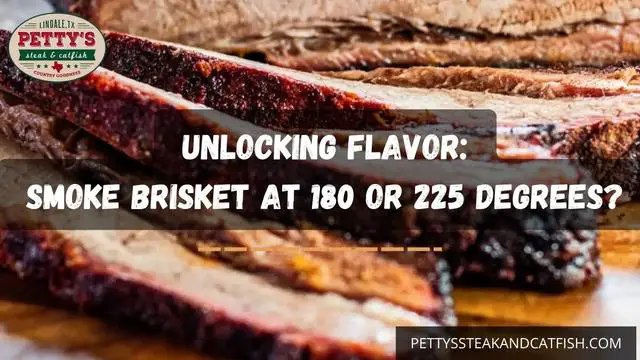
1. Faster Cooking Time: Smoking a brisket at 225 degrees Fahrenheit allows for a quicker cook time compared to cooking at 180 degrees. This is beneficial if you’re short on time and still want to enjoy a delicious, smoky brisket.
2. Even Cooking: The higher temperature of 225 degrees ensures that the meat cooks evenly throughout. This helps to prevent any parts of the brisket from becoming overcooked or undercooked.
3. Crispy Exterior: Smoking at 225 degrees Fahrenheit creates a nice smoke ring and gives the brisket a crispy exterior without the need for additional steps like building a bark. This adds texture and enhances the overall eating experience.
FASTER COOK TIME
Cooking brisket at a higher temperature of 225 degrees Fahrenheit allows for a faster cook time. The increased heat helps to cook the meat through more quickly, reducing the overall cooking time. This is beneficial for those who want to enjoy a smokey brisket but don’t have 8-10 hours to spare for slow cooking. With the higher temperature, the meat will still be tender and flavorful, without the extended cook time.
A temperature of 225 degrees Fahrenheit is also a great option for cuts of brisket with less marbling. Since there is less intramuscular fat, cooking at a higher temperature ensures that the meat doesn’t dry out on the stove. The initial marinate will suffice in keeping the meat tender and juicy. The consistent blasting of heat at 225 degrees creates a nice smoke ring and gives you a crispy exterior without having to go through the process of building a bark.
CRISPY EXTERIOR
If you prefer a crispy exterior on your brisket, cooking it at 180 degrees Fahrenheit may not give you the desired results. The low temperature cooking method tends to make the meat tender and juicy, but lacks the ability to create a crisp crust. To achieve a crispy exterior, you will need to take additional steps such as building a bark on your brisket, which can add more time and effort to the cooking process.
Cooking your brisket at 225 degrees Fahrenheit provides several benefits, including a faster cook time compared to cooking at 180 degrees. The higher temperature allows for more rapid cooking and ensures that the meat is cooked through evenly. This temperature is also suitable for briskets with less marbling, as it helps prevent the meat from drying out during the cooking process. Additionally, cooking at 225 degrees Fahrenheit creates a nice smoke ring and can give you a crispy exterior without the need for building a bark.
If you want both a subtle smokiness and a crispy exterior on your brisket, there is a middle ground approach you can try. Start by slow cooking the brisket at 180 degrees Fahrenheit until it is almost finished. Then, increase the heat to achieve the desired crispiness on top of very tender meat. This method combines the advantages of both temperatures and can result in a winning combination of flavors and textures.
THE MILLION DOLLAR TIP
If you want to achieve a perfect balance of subtle smokiness and a crispy exterior on your brisket, try slow cooking it at 180 degrees Fahrenheit until it is almost finished. Then, turn up the heat and leave it undisturbed for another 10 minutes or so. This method will give you tender meat with a delicious crunch, creating a winning combination.
BUILDING THE BARK ON YOUR BRISKET
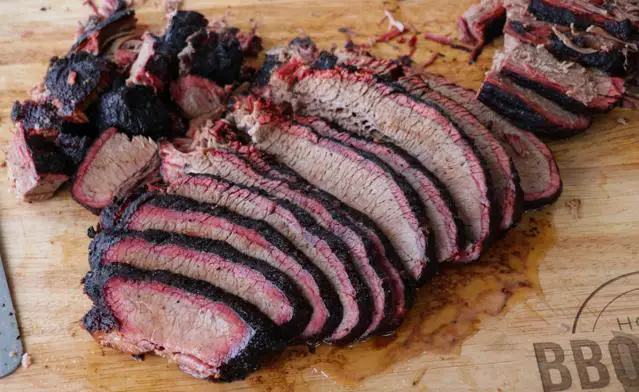
Building a bark on your brisket is an essential step in creating a flavorful and crispy exterior. This process starts with prepping the meat with a generous seasoning rub, ensuring that it is evenly coated. The seasoning rub can vary based on personal preference, but typically includes paprika, salt, garlic powder, and other desired herbs.
Once the seasoning is applied, the brisket should be set to slow cook at a lower temperature, such as 180 degrees Fahrenheit. While the meat cooks, it is important to prepare a spritz using an acidic sauce like vinegar or Worcestershire sauce. Spritzing the meat periodically during cooking helps to slow down the process and allows the contents of the spritz to coat the meat, forming the bark.
Reapplying the seasoning rub after each spritz ensures even distribution and prevents an unevenly spaced brisket. Although building the bark requires extra time and effort, it enhances the flavor and texture of the cooked brisket, making it well worth it in the end.
SOME TIPS AND TRICKS
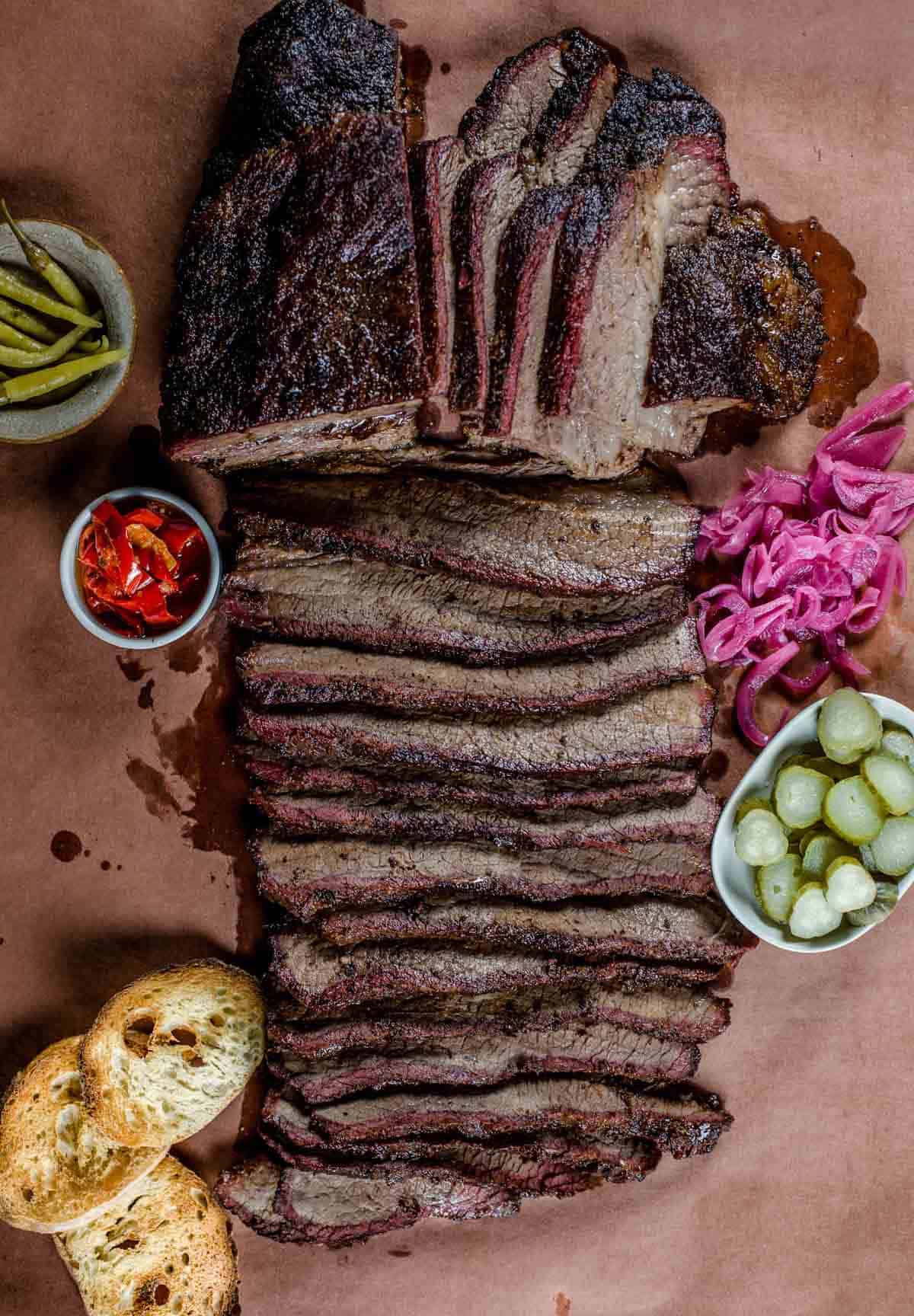
1. Choose the right cut of brisket: Look for a piece with good marbling and consistent fat distribution for the best flavor and tenderness.
2. Season generously: Use a flavorful rub or marinade to enhance the taste of the brisket. Experiment with different herbs and spices to find your preferred combination.
3. Slow cook for optimal results: Whether you choose 180 or 225 degrees Fahrenheit, allow enough time for the connective tissue to break down and the meat to become fork-tender.
4. Consider your preferences: If you prefer a subtle smoke flavor, opt for 180 degrees Fahrenheit. For a stronger smoky taste, go for 225 degrees Fahrenheit.
5. Spritzing method: Spritzing your brisket with an acidic liquid during cooking helps create a flavorful bark on the meat’s surface.
6. Store leftovers properly: Wrap leftover brisket in foil and store it in an air-tight container in the refrigerator to prevent drying out. When reheating, let it reach room temperature before placing it in a preheated oven.
7. Experiment with building a bark: If you want a crispy exterior, try slow cooking at 180 degrees Fahrenheit first and then increase the heat towards the end of cooking to develop a delicious crust.
8. Don’t rush the process: Slow cooking takes time, so plan accordingly and allow yourself ample time to cook the brisket without feeling rushed.
9. Keep an eye on internal temperature: Use a meat thermometer to ensure your brisket reaches an internal temperature of around 195-205 degrees Fahrenheit for optimal tenderness.
10. Share your own tips and tricks: Everyone has their own unique methods and preferences when it comes to smoking brisket, so don’t be afraid to share your own experiences and techniques with others.
PRECAUTIONARY PRACTICES
1. Choose high-quality brisket: Select a piece of beef brisket with good marbling for better taste and tenderness.
2. Consider your preference for smokiness: Determine whether you prefer a subtle or strong smokey flavor before deciding on the cooking temperature.
3. Cooking time: Plan your cooking schedule accordingly as lower temperatures require longer cooking times, while higher temperatures cook faster.
4. Crispy exterior: If you desire a crispy exterior on your brisket, opt for a higher temperature such as 225 degrees Fahrenheit.
5. Building the bark: If you want to build a bark on your brisket, cook it at 180 degrees Fahrenheit and apply a seasoning rub before slow cooking.
6. Proper storage: When storing leftover brisket, wrap it tightly in foil and place it in an air-tight container to prevent hardening in the refrigerator.
7. Reheating technique: To reheat the brisket, let it thaw at room temperature, then bake it in the oven at the same temperature it was cooked at for approximately an hour before slicing and serving.
CONCLUSION
In conclusion, the ideal temperature for smoking a flavorful beef brisket depends on your personal preference. If you prefer a subtle smokey flavor, it is recommended to smoke the brisket at 180 degrees Fahrenheit. This lower temperature allows for a longer cooking time, which helps melt off the connective tissue and create a tender and juicy meat. Thinner cuts of brisket with consistent marbling also benefit from this temperature setting.
On the other hand, if you prefer a stronger smokey flavor and have a piece of meat with less marbling, smoking the brisket at 225 degrees Fahrenheit is recommended. This higher temperature cooks the meat faster and ensures even distribution of heat. It also creates a nice smoke ring and gives you a crispy exterior without the need for additional steps.
If you want both a subtle smokiness and a crispy ring, you can cook the brisket at 180 degrees Fahrenheit until it’s almost finished, then crank up the heat for another 10 minutes or so to achieve that desired crunch. The process of building a bark on your brisket is best done at lower temperatures.
In conclusion, whether to smoke brisket at 180 or 225 degrees Fahrenheit depends on personal preference and time constraints. While 225°F allows for a faster cook with a slightly less tender result, smoking at 180°F yields a more juicy and tender brisket that requires extra time. Ultimately, it is important to experiment and find the temperature that works best for your desired outcome.
Learn More About Grilling
If you want to learn more about grilling, check out these other helpful resources!



